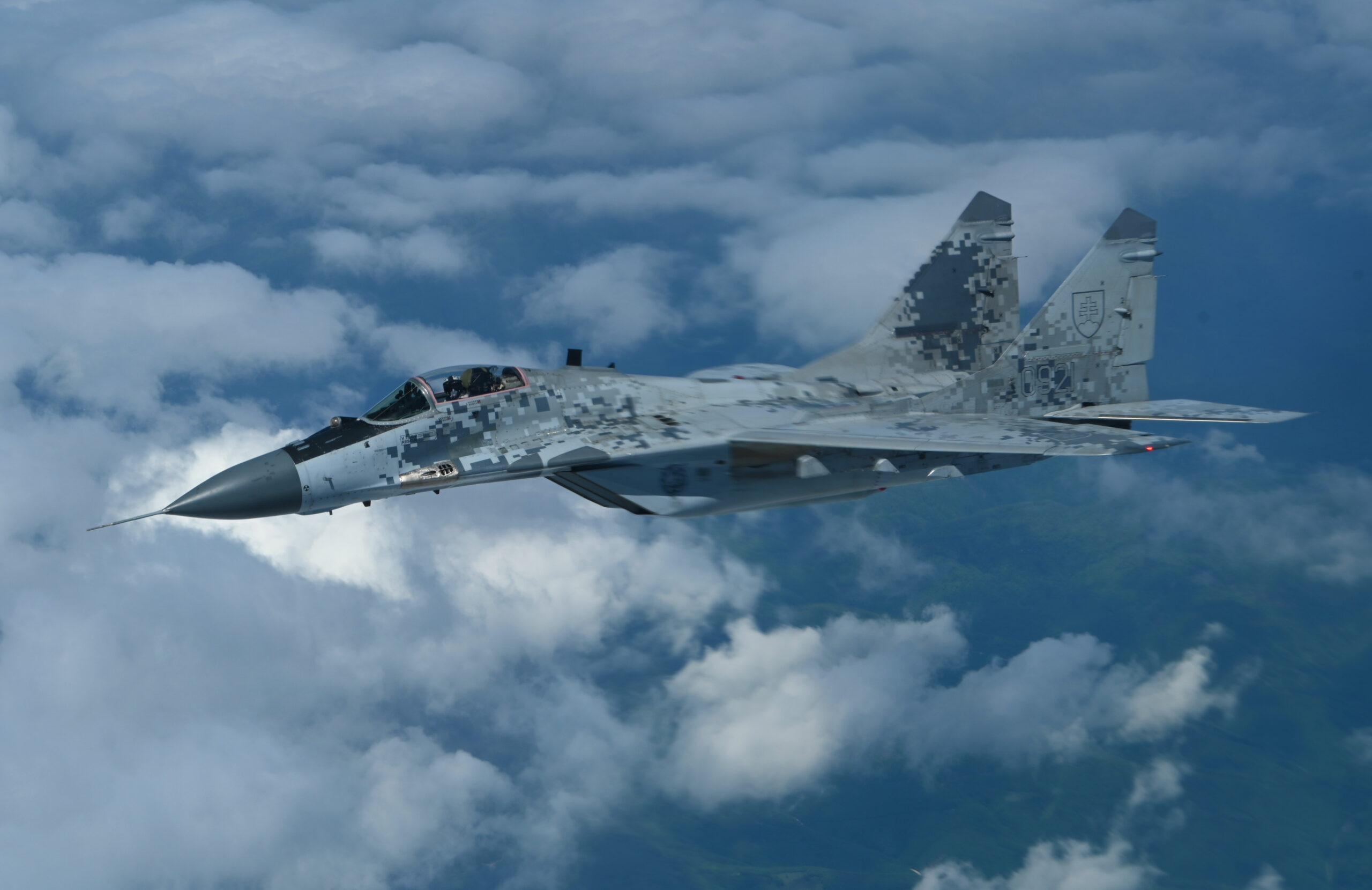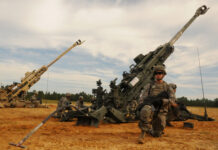Slovakia became the second NATO country to donate fighter aircraft to Ukraine on 17 March 2023, with the Slovakian government approving a plan to send the country’s fleet of MiG-29 ‘Fulcrums’ to support Ukraine’s operations against its Russian invaders.
The move follows Poland’s announcement the previous day that it would send a dozen or so MiG-29s to Ukraine.
These offers are significant because the Ukrainian Air Force (Povitryani Syly Ukrayiny – PSU) is already an operator of the Soviet-designed MiG-29, meaning that there will be few training or logistical issues in assimilating the Polish and Slovakian MiGs into the PSU inventory.
Slovakian Prime Minister Eduard Heger said during a news conference on 17 March that his government was “on the right side of history” and was “closely co-ordinated with the Polish side, Ukraine and other allies”.
He added in a Tweet, “Promises must be kept and when [Ukrainian President Volodymyr Zelenskyy] asked for more weapons including fighter jets I said we’ll do our best. Glad others are doing the same.”
Although Heger’s Tweet indicated Slovakia would send 13 MiG-29s to Ukraine, the Slovak Air Force’s most recently operational combat fleet consisted of just 11 MiG-29s (nine single-seat MiG-29ASs and two MiG-29UBS twin-seat conversion trainers) originally delivered to the Czechoslovak Air Force in 1989 but upgraded by RAC MiG under contracts signed in 2004 and 2013. A further 12 MiG-29ASs and one MiG-29UBS have been in storage for some time.
On 31 August 2022 the Slovak Air Force grounded its MiG-29 fleet due to a lack of spares and expertise to maintain them after Russian technicians returned home.
The MiGs are due to replaced by 12 single-seat and two twin-seat F-16V Block 70/72s ordered from the United States in December 2018. These were initially supposed to be delivered from this year, but in March 2022 the Slovak Ministry of Defence said they had been delayed by 12 to 14 months.
According to an AP report on 17 March, Slovakia will receive EUR 200 M from the European Union as compensation and unspecified arms from the United States worth EUR 700 M in exchange for giving its MiG-29 fleet to Ukraine.
Before the Russian invasion of Ukraine on 24 February 2022 the PSU operated a fast jet combat air fleet of about 132 aircraft that included three or four dozen operational MiG-29s of around 100 of the type in its inventory. As of mid-March the Oryx website that tracks visually verifiable equipment destroyed in the Ukraine conflict was listing the PSU as having lost 18 MiG-29s, suggesting it possibly has around 20 operational ‘Fulcrums’ left.
The Slovak and Polish donations mean that the PSU could soon have at least two dozen additional 32 MiG-29s at its disposal.
The PSU will have to be careful how it uses the Polish and Slovakian MiG-29s once they are received. Unlike land systems, which can be dispersed and hidden relatively easily, the fact that fighters can only operate from aerodromes, be they military air bases or civilian airports, means the Russians are likely to target them with missiles or armed unmanned aerial vehicles.
Peter Felstead












